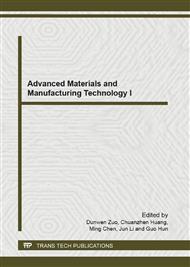p.270
p.275
p.279
p.283
p.287
p.293
p.297
p.303
p.309
Research on the Propagation of the Crack Parallel to and Lying on the Interface in the Cermet Cladding Part
Abstract:
Taking the interface crack in the cermet cladding part as the study object, a new comparative propagation property parameter (CPPP) CP suitable to judge the interface crack propagation direction in the cladding part is proposed. The interface crack propagation criterion is established. Based on it, the theoretical research on the parameters (CP1, CP2 and CPi) for the crack parallel to and lying on the interface propagating to the clad, to the substrate, and along the interface is carried out. The interface crack propagation law is investigated with an example. The research results show that the crack will more easily deflect to the clad.
Info:
Periodical:
Pages:
287-292
Citation:
Online since:
January 2012
Authors:
Price:
Сopyright:
© 2012 Trans Tech Publications Ltd. All Rights Reserved
Share:
Citation:


